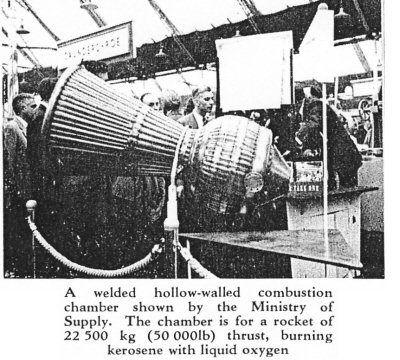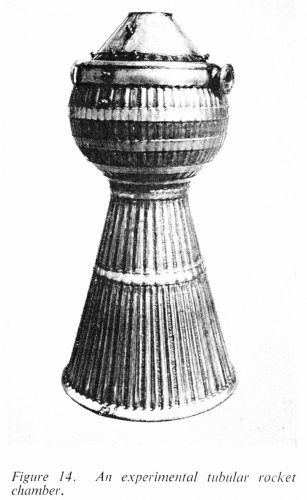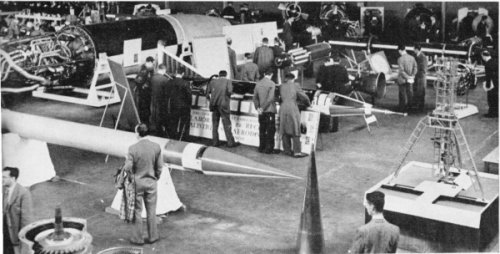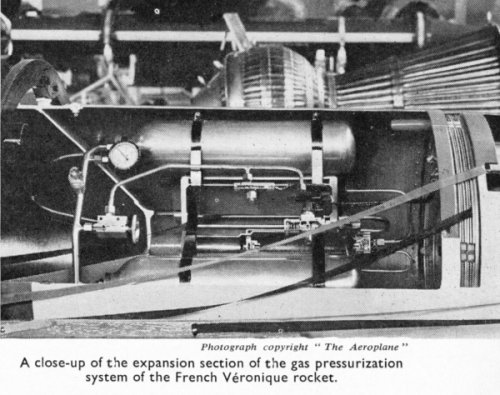Mysterious Rocket Engine
FLIGHT, 14 September 1956
Most of the Ministry stand at Farnborough was devoted to
non-warlike equipment, but nobody could fail to be impressed by
the chamber for a liquid-oxygen and kerosine motor placarded as
"over 50,000 lb thrust." Although this is only of the same order
as the V-2 chamber of a dozen years ago the techniques are incomparably
more advanced. The chamber jacket had 32 identical
consituent parts each forming a tubular axial passage for regenerative
kerosine cooling. Each segment was formed from side-byside
strips machine-welded and hydro-pressed. Combustion
pressure was stated to be approximately 500 lb.
A Westcott engine Delta 2 or Delta 3 chamber the only British engines with sufficient thrust?
FLIGHT, 14 September 1956
Most of the Ministry stand at Farnborough was devoted to
non-warlike equipment, but nobody could fail to be impressed by
the chamber for a liquid-oxygen and kerosine motor placarded as
"over 50,000 lb thrust." Although this is only of the same order
as the V-2 chamber of a dozen years ago the techniques are incomparably
more advanced. The chamber jacket had 32 identical
consituent parts each forming a tubular axial passage for regenerative
kerosine cooling. Each segment was formed from side-byside
strips machine-welded and hydro-pressed. Combustion
pressure was stated to be approximately 500 lb.
A Westcott engine Delta 2 or Delta 3 chamber the only British engines with sufficient thrust?




